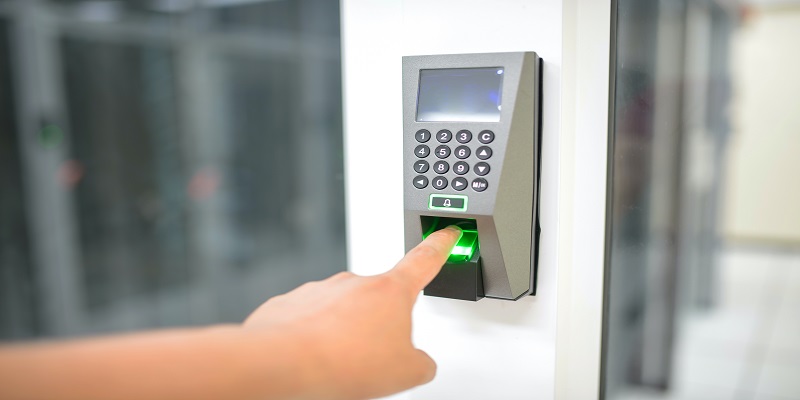In a world where security threats are becoming increasingly sophisticated, it’s more important than ever to stay ahead of the curve when it comes to protecting our assets. Fortunately, rapid advancements in technology have given us powerful tools to beef up security systems and stay one step ahead of potential attacks. From biometrics that can identify individuals based on their unique physical traits, to AI-powered algorithms that analyze complex data sets for suspicious activity, we’ll explore how cutting-edge technologies are transforming the way we approach security in this blog post. It’s time to discover how these advanced solutions are helping businesses and organizations of all sizes safeguard their people and assets with unprecedented accuracy and efficiency.
Introduction to Security Systems and Technologies
The use of security systems and technologies is becoming increasingly important in today’s world. With the rise of crime and terrorism, it is more important than ever to have secure systems in place to protect people and property. There are many different types of security systems and technologies available, each with its own advantages and disadvantages. In this article, we will introduce some of the most popular security systems and technologies, including biometrics, CCTV, access control, and artificial intelligence (AI).
Biometrics encompasses the utilization of physical or behavioral traits for the purpose of identifying individuals. Common examples of biometric identifiers include fingerprints, iris scans, and face recognition. Biometric systems are often used for security purposes, as they can be difficult to forge and offer a high degree of accuracy.
CCTV (closed-circuit television) is a type of video surveillance that uses cameras to monitor activity in a given area. CCTV systems can be used for both public and private security purposes.
Access control is a type of security system that controls who has access to certain areas or resources. Access control systems can be physical (e.g., locks and keys) or electronic (e.g., passwords or ID cards).
Artificial intelligence (AI) is a type of computer technology that is designed to simulate human cognitive functions. AI-powered security systems are becoming increasingly common, as they offer a number of advantages over traditional security solutions.

Benefits of Advanced Security Technologies
There are many benefits to implementing advanced security technologies into physical security systems. Perhaps the most obvious benefit is the increased level of security that these technologies can provide. By using biometrics and artificial intelligence (AI), security systems can become much more effective at identifying and deterring potential security threats.
Another benefit of using advanced security technologies is that they can help to improve the overall efficiency of a security system. For example, by using AI to automate the identification of potential threats, security personnel can be freed up to focus on other tasks. In addition, by using biometrics to streamline the process of granting access to authorized individuals, security systems can operate more smoothly and efficiently.
By employing advanced security technologies, physical security systems can become much more flexible and adaptable. For instance, if a new type of threat is identified, a well-designed system incorporating AI can relatively easily be modified to take this new threat into account. This sort of flexibility and adaptability is crucial in today’s ever-changing world.
There are many advantages to incorporating advanced security technologies into physical security systems. These technologies can improve the overall level of security, make security systems more efficient, and allow them to better adapt to changing threats.
Using Biometrics in Security System
The use of biometrics in security systems is becoming increasingly popular, as the technology becomes more sophisticated and reliable. Biometrics refers to the identification and verification of individuals based on their physical or behavioral characteristics. This can include fingerprints, iris scans, facial recognition, and voice recognition.
Biometrics can be used for a variety of purposes, including access control, time and attendance tracking, and fraud prevention. In terms of security, biometrics can be used to authenticate users and grant them access to systems or data. They can also be used to track user activity and detect unusual behavior that may indicate a security threat.
One of the benefits of using biometrics is that it can help to reduce fraudulent activity. For example, if someone tries to use a stolen identity to gain access to a system, the biometric data associated with that identity can be used to confirm that the person is not who they claim to be. This type of authentication is much more difficult to fake than traditional methods such as passwords or ID cards.
Another benefit of biometrics is that they offer a higher level of security than traditional methods such as passwords or ID cards. This is because biometric data is unique to each individual and cannot be replicated by someone else. Even if someone knows your password or has your ID card, they will not be able to gain access to your account or data if they do not have your biometric data as well.
AI and Machine Learning for Enhanced Security
In recent years, there has been a rapid evolution in the security industry. This is largely thanks to advances in technology, which have led to the development of new and more effective security solutions. One area that has seen particularly significant progress is in the area of AI and machine learning.
Biometrics comprise physical or behavioral attributes that can be employed for the purpose of individual identification. Prominent illustrations encompass fingerprints, iris scans, and facial recognition. This enables them to detect patterns and make predictions. Machine learning is already being used in a number of different ways to enhance security systems. For example, it can be used for automated threat detection and response, as well as for identifying unusual or suspicious behavior.
AI also has great potential for improving the accuracy of biometric authentication systems. Biometrics refers to the physical or behavioral attributes that can be utilized for identifying an individual. Typical instances include fingerprints, iris scans, and facial recognition. By using AI to improve the accuracy of these systems, we can further reduce the chances of unauthorized access.
The combination of AI and machine learning is providing us with powerful new tools for enhancing security. With these technologies, we can develop more sophisticated and effective security solutions that can help keep us safe from various threats.

Moving Towards Smarter Security Systems
As the world moves towards more advanced security systems, biometrics and AI are playing an increasingly important role. Biometrics, such as fingerprint and iris recognition, are becoming more common as a way to identify individuals. AI is being used to develop predictive models that can help identify potential security threats.
These technologies are enhancing security systems in several ways. First, they make it possible to quickly and accurately identify individuals. This aids in guaranteeing that only authorized individuals are granted access to secure or sensitive areas. Second, they can be used to predict potential security risks. This helps security personnel to be proactive in addressing potential threats.
Third, these technologies can help to improve the efficiency of security operations. For example, by automating the identification of individuals, biometric systems can free up resources that can be devoted to other tasks. Similarly, predictive models developed using AI can help security personnel focus on areas most likely to experience problems.
Fourth, these technologies can improve the accuracy of information about security risks. For example, by combining data from multiple sources, AI-based risk prediction models can provide a more accurate assessment of potential threats than any single source could provide on its own.
These technologies offer the potential for significant cost savings. By automating some tasks and reducing the reliance on manual processes, biometric and AI-based systems can help reduce the overall cost of operating a security system.
Challenges with Adopting Advanced Technologies
In matters of security, there is no such thing as excessive preparedness. Everyone wants to know that their possessions and loved ones are safe, from homes to businesses. In recent years, we have seen a rise in the use of advanced technologies to enhance security systems. However, with any new technology, there are always challenges that come along with it.
One of the biggest challenges with adopting advanced technologies is the cost. Many of these products are still new to the market and can be quite expensive. For businesses, this can be a deterrent when it comes to investing in security upgrades. Another challenge is that not all products are compatible with one another. This can make it difficult for businesses to find a system that meets all their needs.
Another challenge that comes with advanced technologies is the learning curve. There is often a steep learning curve associated with using these products. This can be frustrating for users who are not familiar with the technology. With any new system, it takes time to learn how to use it effectively.
Despite these challenges, advanced technologies can enhance security systems in a number of ways. They can provide better protection against intruders and deter crime. They can also help businesses improve their response times in the event of an emergency. Advanced technologies are constantly evolving and becoming more accessible. As the costs associated with them continue to decrease, we expect to see more businesses adopting them into their security plans.
How AI Can Be Used to Generate Evidence in Crime Cases
Advanced technologies like biometrics and AI are changing the face of security systems. In the past, security systems have relied on human observation and physical evidence to detect and solve crimes. However, with the advent of advanced technologies, security systems are now able to generate their own evidence.
One way that AI can be used to generate evidence is through the use of facial recognition technology. This technology can be used to identify suspects in a crowd or match them to CCTV footage. Facial recognition technology is also being used by law enforcement agencies to create composites of missing persons.
Another way that AI can be used to generate evidence is through the use of voice recognition technology. This technology can be used to identify speakers in recordings or match them to voice samples in a database. Voice recognition technology is also being used by law enforcement agencies to create databases of known offenders.
AI can also be used to generate evidence through the use of text analysis. This technology can be used to identify patterns in text documents or emails that may indicate criminal activity. Text analysis is also being used by law enforcement agencies to create databases of known offenders.
Conclusion
Advanced technologies like biometrics and artificial intelligence are becoming essential components of modern security systems. It is important for companies and organizations to stay up-to-date on the latest innovations in this field so that they can ensure their security networks are as safe and effective as possible. By taking advantage of these cutting-edge solutions, businesses can not only maximize their protection but also create an environment that helps foster a sense of trust among customers. With continued advancement in this area, it will be exciting to see what new developments lie ahead in the realm of technology-enhanced security systems.













